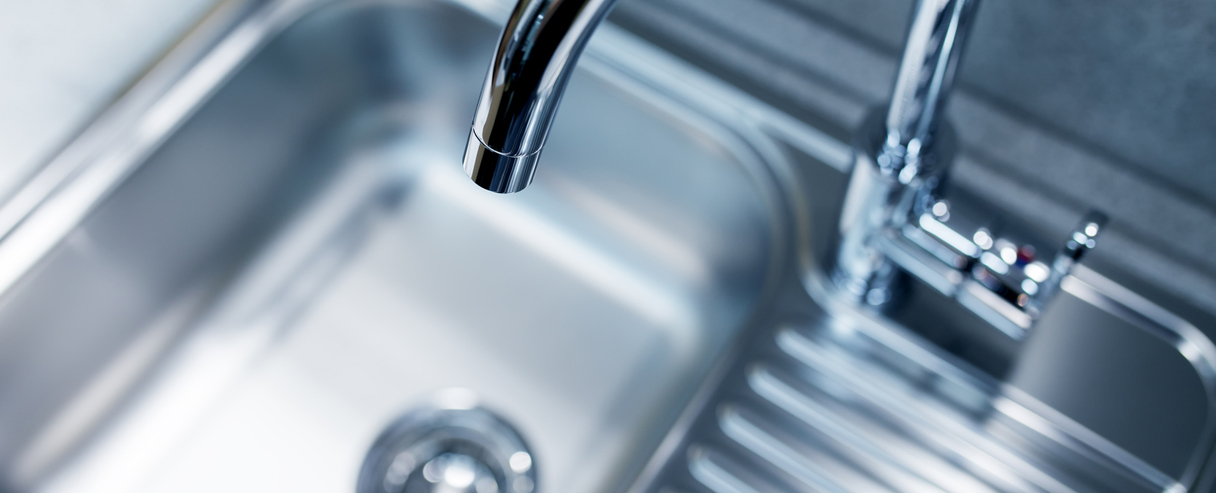Kitchen sinks become slow, kitchen sinks become clogged and kitchen sinks become backed up for many different reasons but the primary reason is that there are large amounts of grease poured down the drain.
Kitchen sinks can also become backed up when they have a garbage disposal attached to them. When a garbage disposal has rice, pasta, fresh vegetables and other things like eggshells even bottle tops and glass they can cause a kitchen sink to clog.
To prevent your kitchen sink from becoming backed up, wipe everything off into the trashcan prior to putting it in the sink, use Dawn® dishwashing liquid to wash in cold water first then wash is a normal temperature after.
If you experience a clogged drain problem, do not pour liquid chemical drain clog removers such as Liquid-Plumr® down your drains – give Just Drains a call we’ll handle it for you.
Clogged or slow drains? Fully insured, dependable, and Professional; contact the drain pros at Just Drains today to solve your drain or sewer issues.
CALL US: 617.265.2828 or 877.737.2460
To clear a residential sink from clean out without acid. This does not include dismantling any pipes.
This Item covers running a 1/2 or 3/8 cable thur mop sink drain however log the run. We are not responsible for the screws if lost while removing or installing.
Jam Inspect / Un jam / Un clog Garbage Disposal without removing from installed location.
“A garbage disposal unit (also known as a garbage disposal, waste disposal unit, garbage disposer, or in Canadian English a garburator) is a device, usually electrically powered, installed under a kitchen sink between the sink’s drain and the trap. The disposal unit shreds food waste into pieces small enough—generally less than 2 mm (0.079 in)—to pass through kitchen drain.
Garbage disposal units are used extensively in United States households, but are far less common elsewhere. The garbage disposal was invented in 1927 by John W. Hammes, an architect working in Wisconsin. He applied for a patent in 1933 that was issued in 1935. His InSinkErator company put his disposer on the market in 1940.
Hammes’ claim is disputed, as General Electric introduced a garbage disposal unit in 1935, known as the Disposall.
In many cities in the United States in the 1930s and the 1940s, the municipal sewage system had regulations prohibiting placing food waste (garbage) into the system. InSinkErator spent considerable effort, and was highly successful in convincing many localities to rescind these prohibition.
Many localities in the United States prohibited the use of disposers. For many years, garbage disposals were illegal in New York City because of a perceived threat of damage to the city’s sewer system. After a 21-month study with the NYC Department of Environmental Protection, the ban was rescinded in 1997 by local law 1997/071, which amended section 24-518.1, NYC Administrative Code.
In 2008, the city of Raleigh, North Carolina attempted a ban on the replacement and installation of garbage disposals, which also extended to outlying towns sharing the city’s municipal sewage system, but rescinded the ban one month later.
Food scraps range from 10% to 20% of household waste, and are a problematic component of municipal waste, creating public health, sanitation and environmental problems at each step, beginning with internal storage and followed by truck-based collection. Burned in waste-to-energy facilities, the high water-content of food scraps means that their heating and burning consumes more energy than it generates; buried in landfills, food scraps decompose and generate methane gas; a greenhouse gas which contributes to climate change.[19]
The premise behind the proper use of a disposal is to effectively regard food scraps as liquid (averaging 70% water, like human waste), and use existing infrastructure (underground sewers and wastewater treatment plants) for its management. Modern wastewater plants are effective at processing organic solids into fertilizer products (known as bio solids), with advanced facilities also capturing methane for energy production.”
*Information collected from Wikipedia and Insinkerator
